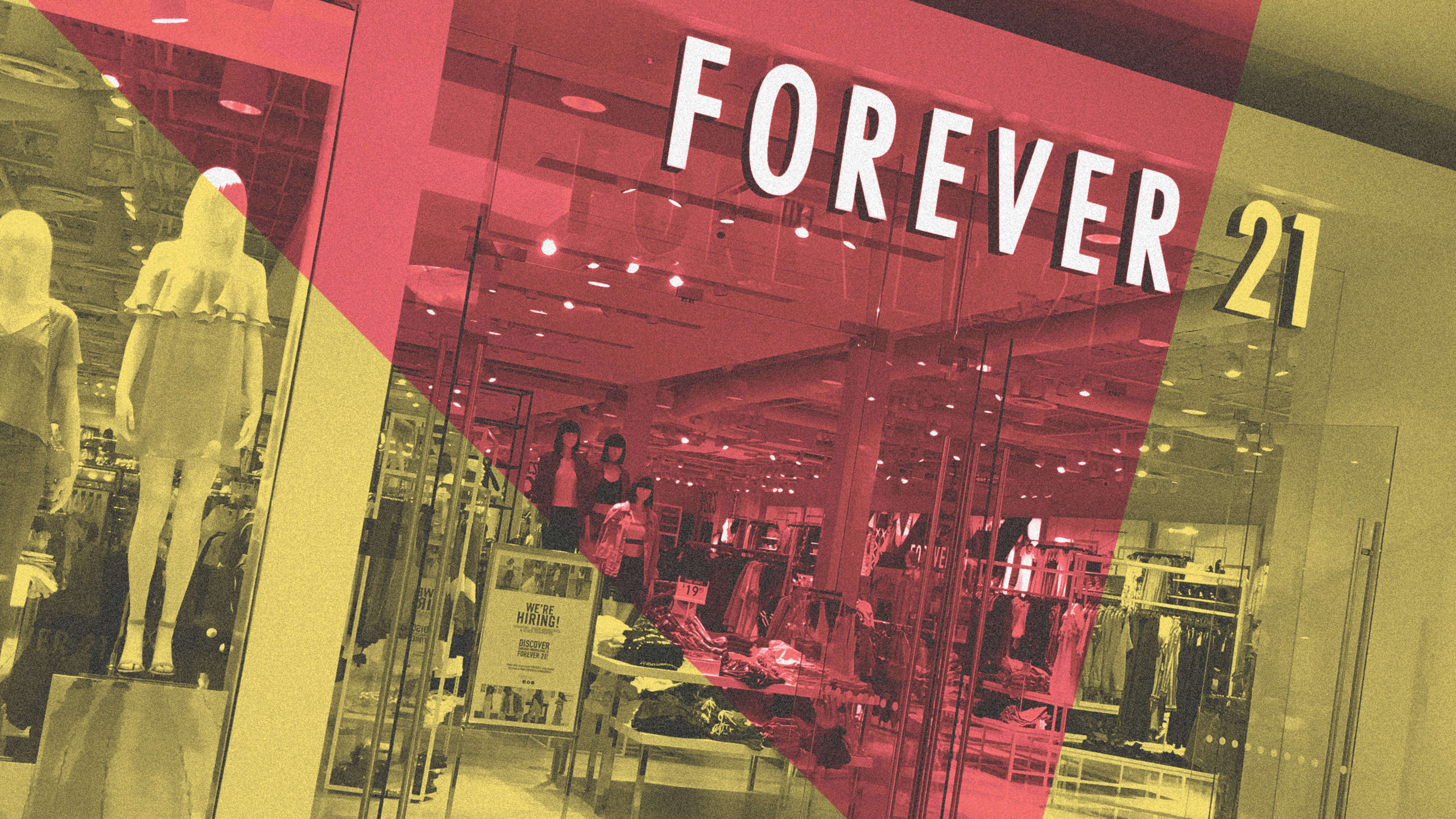Over the weekend, Forever21 filed for bankruptcy. It wasn’t entirely unexpected: rumors about a possible Chapter 11 filing had been circulating for months. The fast fashion brand will not entirely disappear, but its operations will be significantly pared down. It will continue to operate its website and hundreds of stores in the United States, Mexico, and Latin America. However, it will shutter 178 stores in the U.S. and end operations in 40 countries, including Canada and Japan.
Some frame the bankruptcy as another nail in fast fashion’s coffin. “Forever21 bankruptcy signals a change in consumer tastes,” the New York Times declared.
After all, Forever21 was America’s equivalent to Sweden’s H&M and Spain’s Zara. The brand encapsulated the American dream. It was founded in the 1980s by a South Korean family that had recently emigrated to California. Like its European counterparts, Forever21 perfected the art of manufacturing cheap clothes that captured the look of the moment. Throughout Forever21’s heyday in the 2000s, this approach to shopping for clothes became the norm. Consumers began to think of clothes as disposable, short-term—sometimes even single-use—objects. Fast fashion made it easy for someone to pick up a new outfit for a party on Friday night, then never wear it again.
Over the past five years, the world has begun to wake up to the damage this model does. Cheap clothes come at a massive cost: from the carbon footprint of the global supply chain that produces raw materials, sends them around the world to be milled and sewn, and shipped to a final destination, to the fact that after the garment is worn only a few times, it will end up in a landfill. Since most fast fashion garments are made from non-biodegradable synthetic fibers, they will sit in landfills for hundreds of years.
Then there’s the devastating human cost of making these clothes. Churning out low-cost clothes requires low-cost labor, which is often tied to terrible working conditions. We know that many of those who work in the apparel industry in developing countries are effectively enslaved. And apparel factories are often unsafe. We saw this in 2013 when a clothing manufacturing complex called Rana Plaza in Bangladesh collapsed, killing 1,134.
It’s easy to see the decline of Forever21 as evidence that the era of fast fashion is coming to an end. And indeed, there are some signs of change. Both H&M and Zara are pivoting to new concepts, like eco-friendly basics and durable clothes. But they’ve also been criticized for vague, misleading sustainability claims. It’s also worth noting that there are many other corners of the fashion universe where fast fashion is still alive and well. Old Navy, for instance, which makes cheap, fashion-forward clothes, is doing so well that it plans to open 800 stores. It has been the most successful of the Gap, Inc. brands—so much so that it is now spinning off to become its own company. Other digitally native fast fashion brands like ASOS and Fashion Nova are thriving.
Then there are less obvious players in the fast fashion market. CostCo, for instance, generates $7 billion in sales from selling cheap clothes. Walmart and Target also sell cheap, trendy clothes, which could all be effectively described as fast fashion. There’s also Amazon, which has been criticized for creating cheaper versions of popular fashion designs, most recently from Allbirds, from lower-quality materials.
In other words, it seems like there is still plenty of demand for fast fashion and many companies eager to cater to it. In this light, Forever21’s decline can be attributed to the fact that it had a massive retail footprint in suburban malls that have seen a decline in foot traffic with the rise of the internet. The brand was also not as digitally forward as some of its counterparts.
Still, the demise of a brand like Forever21 could create space for more ethical retail concepts to swoop in and win more consumers. For instance, there’s been a massive increase in online resale sites like ThredUp and Poshmark, which let consumers to buy and sell secondhand items. Meanwhile, direct-to-consumer fashion brands like Everlane and Cuyana have focused on making higher-quality products more accessibly priced, which in theory could mean consumers buy fewer but better items.
Fashion is still one of the most polluting industries in the world, and it has a long way to go to cleaning up its act. But there is hope: Today’s young people are acutely aware of their impact on the environment, as demonstrated by the youth driven climate protests around the world. There’s some evidence that these young people are more likely to be drawn to ethical, sustainable companies. One recent report by Nielsen found that 73% of millennials around the world are willing to spend more money on a sustainable brands. It seems twentysomethings may see fast fashion as downright unfashionable.
Recognize your brand’s excellence by applying to this year’s Brands That Matter Awards before the early-rate deadline, May 3.
